We’ll start this post with the most important advice. If you’re planning a Nova Scotia motorcycle ride leave plenty of time. There is just so much to see, so much to enjoy and so many great roads to ride. This is not the kind of destination that lends itself to being in a hurry. Plan on putting a few miles on your motorcycle. We plan on devoting four posts to this exciting adventure.
Getting To The Atlantic provinces
The Canadian Maritimes of Nova Scotia, Prince Edward Island and New Brunswick only make up about 5% of the total population of Canada. The region is completely surrounded by water…The Gulf of St. Lawrence, The Gulf of Maine and the mighty North Atlantic Ocean. There are predominantly two ways to get to the area. I have visited the region twice over the last 15 years and will describe both routes.
The first way to undertake a Nova Scotia motorcycle ride is by traveling ‘the long way’ through New Brunswick Province. I don’t recommend this route as it is not really a very exciting ride. To put it in perspective: If you enter New Brunswick Province at the end of Interstate 95 in Maine, you still have 475 miles to ride to get to The Cabot Trail; one of the greatest motorcycling roads in the world. If you take the Trans Canada highway (the quickest route) the first 225 miles will have you riding through a straight, endless landscape of scrub oak and pine.
A more scenic approach will take you out of the state of Maine and onto Route 1 in New Brunswick. It’s still 500 miles to The Cabot Trail on this route. You would be hard-pressed to cover these 500 miles in one day, but this option offers a much more pleasant visual and cultural experience.
Take The Boat!
I have two round trips to The Canadian Maritimes under my belt. Only once have I exercised the boring Trans Canada Highway option. The other three one way crossings were done on The Cat. The Cat is the high speed ferry that runs from Maine to Yarmouth, Nova Scotia. On my first visit to Nova Scotia The Cat was sailing from Bar Harbor, Maine. It subsequently changed its Nova Scotia-bound route to originate in Portland, Maine in an attempt to elicit more tourist interest.
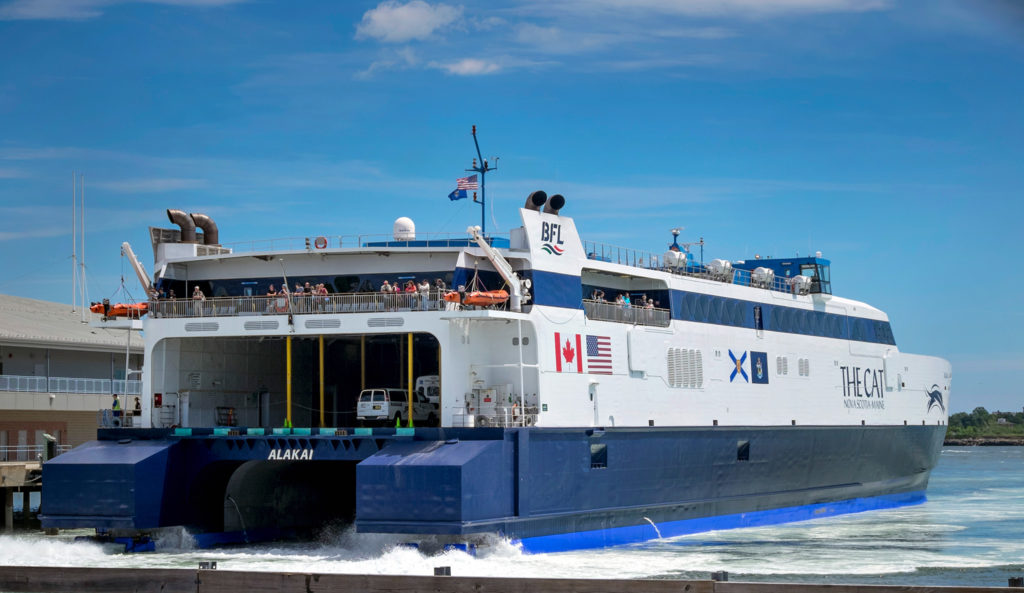
The Cat ferry arriving in Portland, Maine
Can’t argue with this change…the ferry is partially funded by the Canadian Government in an effort to boost tourism, and the change was made in an attempt to attract more travelers. The ferry ceased operation altogether during the COVID-19 crisis, but is up and running again in 2022…once again leaving from its former berth in Bar Harbor.
The Cat is a wonder to experience and, in my opinion, the best way to start a Nova Scotia motorcycle ride. The boat is huge: 350 feet long with a beam (width) of almost 90 feet. Tractor trailers can, and do, make u-turns inside the craft. The catamaran hull is capable of speeds up to 50 MPH! Unbelievable for a boat of this size. It is a very motorcycle-friendly conveyance, too. The mandatory tie downs are provided on board to secure your bike for the crossing; which can get a bit “bumpy” in rough seas.
Ferry Crossing Details To Know
The crossing from Portland to Yarmouth, Nova Scotia took about 5-1/2 hours. Between Bar Harbor and Yarmouth the crossing time drops to about 3-1/2 hours, depending upon the sea conditions. The Bar Harbor option is much more favorable as it gives you the opportunity to ride further along the downeast coast of Maine before heading to The Atlantic Provinces. A trip along this route is documented in a previous post.
The 2022 fares on The Cat are $115 one way/$210 round trip for adults. Add to that $110 each way for your motorcycle and you can see that a couple riding two up will spend $640 for the round trip. A bit pricy for some, maybe, but I think it is totally worth the cost. Especially when you consider that it eliminates the long slog through New Brunswick and replaces that with much better riding opportunities. I’ll start discussing them now.
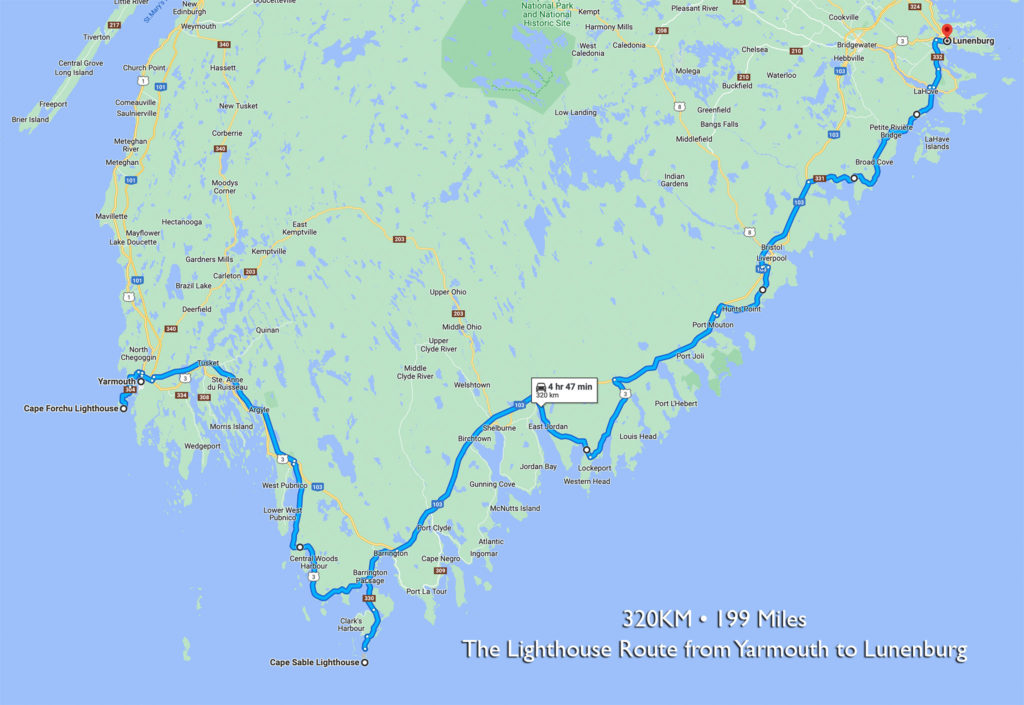
The Lighthouse Route
The Cabot Trail may be the prime destination for motorcyclists and travelers of all types, but a Nova Scotia motorcycle ride has so much more to offer. The Lighthouse Route is a 210 mile scenic ride between Yarmouth and Halifax, Nova Scotia. Some travelers might enjoy the offerings of a big city like Halifax; the capital and largest city of Nova Scotia Province. Halifax is one of the largest and deepest ice-free harbors on The North Atlantic and has attracted all the growth that comes with that natural feature.
In addition to being one of the most important commercial ports in Canada, it is a popular tourist destination. Visitors arrive on cruise ships or from Halifax Stanfield International Airport. The city has all of the entertainment, cultural and mercantile opportunities one comes to expect from big city destinations. As someone who avoids metropolitan areas in my travels I can’t offer any personal recommendations on where to stay, what to see, where to eat, etc. In two trips to Nova Scotia I have yet to set foot within the boundaries of Halifax. You’ll have to source your local Halifax information elsewhere.
Yarmouth, Nova Scotia
I have, however, ridden most of The Lighthouse Route twice and highly recommend it. When you arrive in Yarmouth, Nova Scotia on The Cat ferry you’ll disembark and clear Canadian customs in the early evening hours. (The ferry leaves Bar Harbor, Maine at 3:00PM). Your Nova Scotia motorcycle ride will start in the morning. Find a place to stay in Yarmouth and plan to set out on The Lighthouse Route first thing tomorrow.
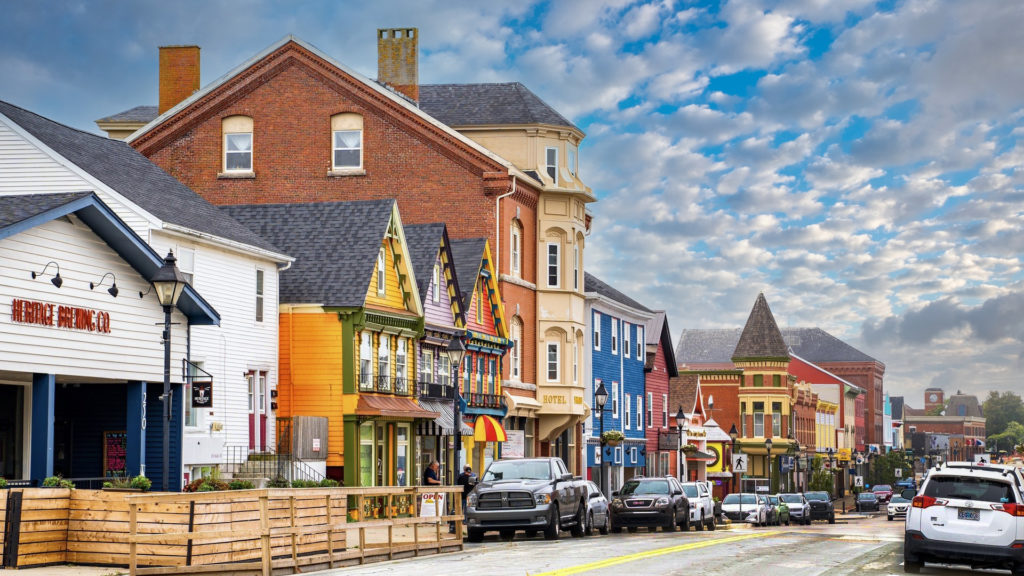
Main Street • Yarmouth, Nova Scotia
My go to accommodations in Yarmouth would be The Rodd Grand Yarmouth at 417 Main Street. This wonderful venue offers nicely appointed rooms and suites, a fitness center, an indoor pool and sauna, as well as a restaurant and cocktail lounge on premises. The establishment is very biker-friendly and allowed me to park my Harley-Davidson® touring bike on the sidewalk by the main entrance, alongside another Harley® and a Honda Gold Wing® belonging to two other hotel guests.
Heading Out
Leaving Yarmouth you should first head 7 miles south on Route 304 to the southern tip of the peninsula. It is here that you will find Cape Forchu Lighthouse which you may have spotted the evening before; as The Cat entered Yarmouth Harbor. At almost 100 feet tall and nestled on 19 acres of rocky shoreline, this is one of the most iconic lighthouses in The Canadian Maritimes. For the ambitious among you there is an oceanfront walking trail to explore.

Cape Forchu Lighthouse on Nova Scotia’s Lighthouse Route
Your next noteworthy stop is about 60 miles later at The Cape Sable Lighthouse. This location earned some auspicious notoriety as the last land station that the sword fishing boat, Andrea Gale, of The Perfect Storm infamy checked in with before heading out to sea on its ill-fated journey.
You could take Fisherman’s Memorial Highway (Route 103) to get to Cape Sable, but I much prefer Route 3 which is aptly named “The Lighthouse Route”. This road is generously marked with signs to guide you on your way without getting lost. No need for GPS. Follow the signs and enjoy pleasant stops along the way for coffee, food, snacks, fuel…whatever you fancy.

The Cape Sable Lighthouse on the south coast of Nova Scotia
Lunenburg
One hundred fifteen miles from Cape Sable you will roll into one of the most beautiful seaside villages I’ve ever visited. Founded in 1753 this town was designated as a UNESCO World Heritage Site in 1995. UNESCO considered the site the best example of a planned British Colonial settlement in North America. It retains its original layout and appearance of the 1800s.
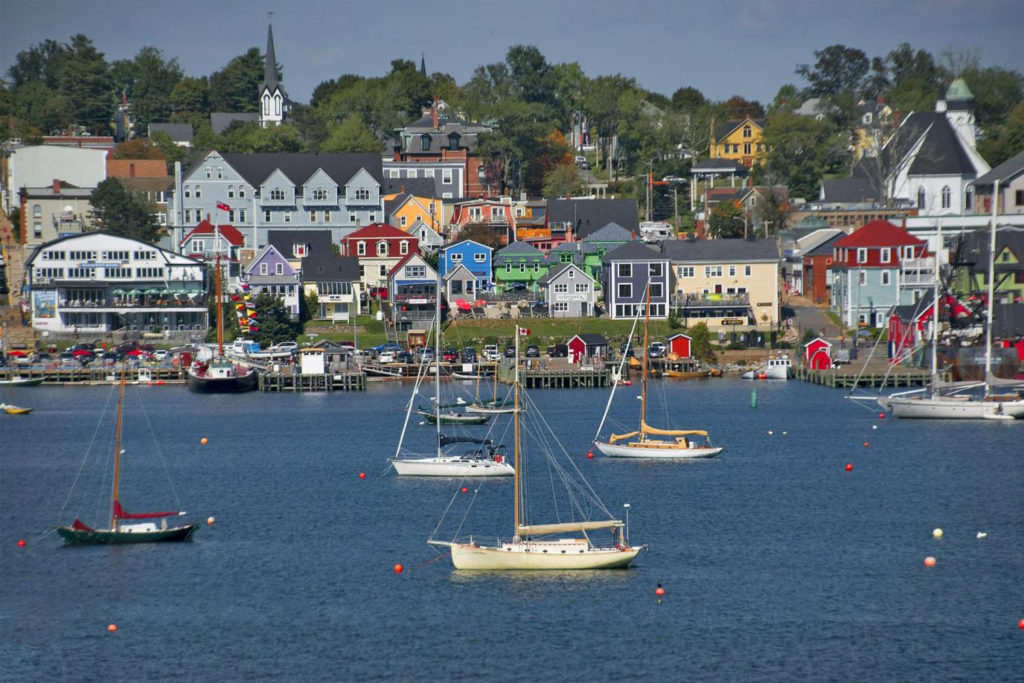
Beautiful harbor view arriving in Lunenburg
I stayed in Lunenburg on one of my Nova Scotia adventures just to be able to capture photographic images of the colorful waterfront buildings at sunrise the next day. I stayed at The Dockside at 85 Montague Street, a wonderful harbor front inn with a great restaurant and cozy bar below the hotel rooms. The rooms were small, a reflection of the age of the structure; but the food and company were fantastic. Guest parking was right on Montague Street and posed no problem or concern to this motorcyclist.
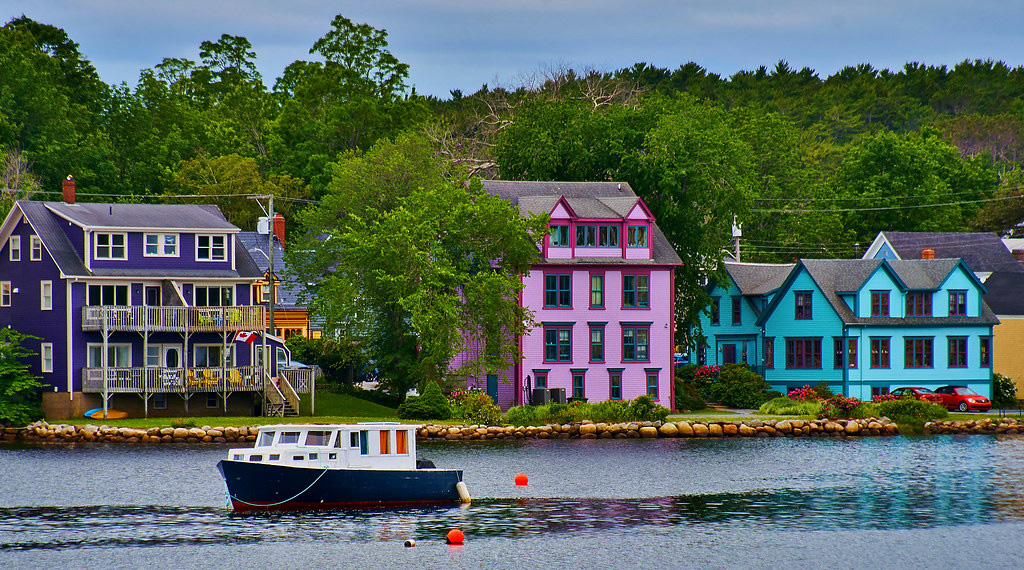
Colorful houses in Lunenburg, Nova Scotia
Conclusion • Nova Scotia motorcycle ride Part 1
There are a total of 20 lighthouses along The Lighthouse Route; and that’s just a small percentage of the 150 lighthouses you will find on a Nova Scotia motorcycle ride. Look for the signs along The Lighthouse Route that will point you towards smaller, less famous, structures. Be forewarned: many of the access roads to the lighthouses are graded, but unpaved, dirt roads. Take care in wet weather and expect your vehicle to become very dusty and dirty.
Tomorrow we will head north across Nova Scotia to The Ceilidh Trail but that will be the subject of another post. We hope you enjoyed this virtual road trip along Nova Scotia’s Lighthouse Route. Leave a comment below and be sure to subscribe for breaking news, new feature announcements and special offers.
Click Here to view an interactive visual index page where you can quickly browse through all of the great features that are published on the Roadcraft USA blog.

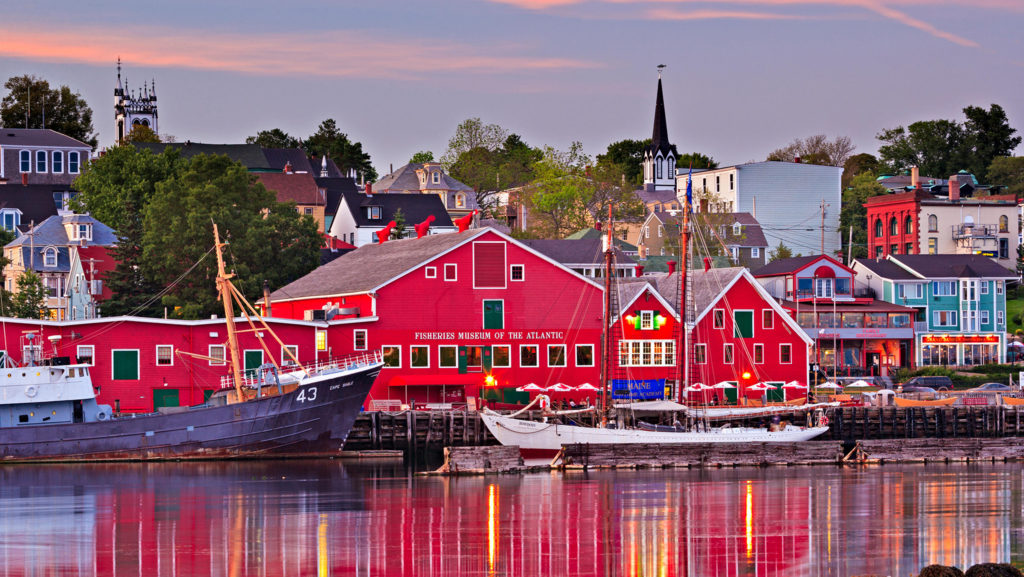
Thanks for the info and pictures. I am hoping to get up there.
I can’t recommend it highly enough, Bill. One of my favorite places to ride in all of North America. Go for it!
Great Read and pictures Mike.
Thanks Robert